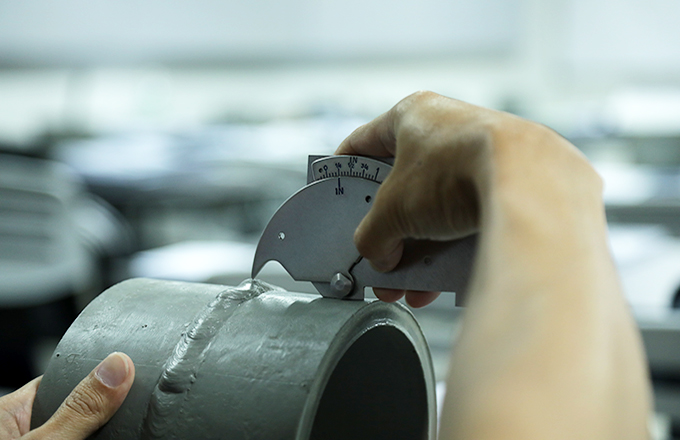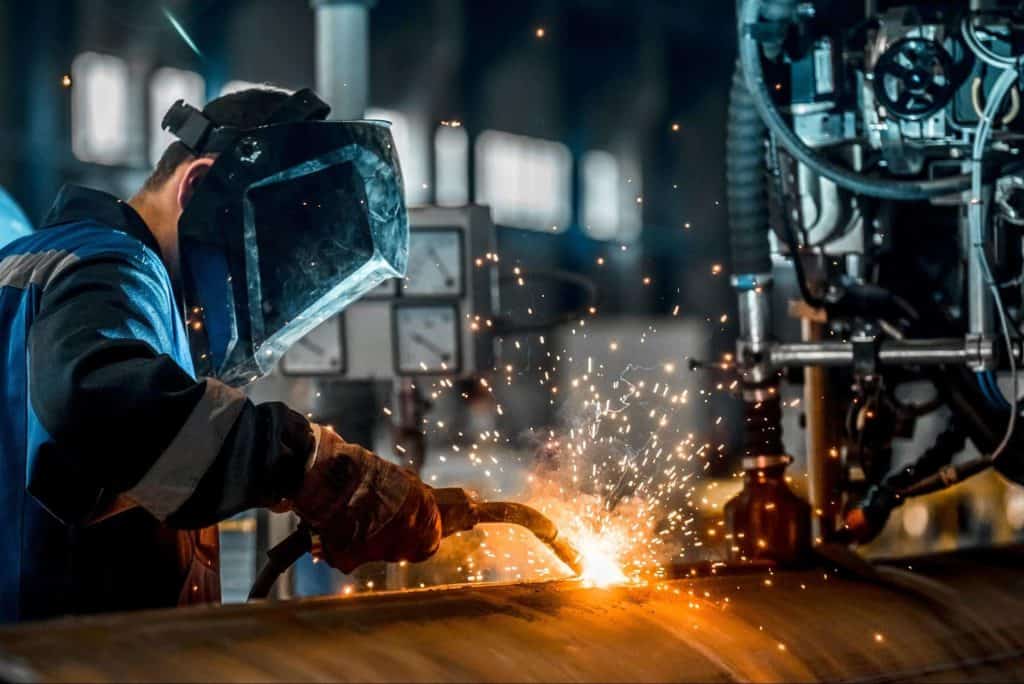A Thorough List for Effective Welding Examination Practices
In the world of welding, the stability of structures is paramount, demanding an extensive method to assessment methods. Checking out these important parts can yield understandings that exceptionally effect welding procedures.
Comprehending Welding Standards
Welding criteria play a crucial function in ensuring the quality and safety and security of bonded components and structures. These criteria develop the criteria for products, treatments, testing, and examination, thus giving a framework for constant quality control in welding procedures. Various organizations, consisting of the American Welding Culture (AWS), the International Organization for Standardization (ISO), and the American Culture of Mechanical Designers (ASME), have established comprehensive requirements that control different elements of welding.
Recognizing welding standards is essential for experts in the area, as adherence to these guidelines lessens the risk of flaws and failures in welded joints. These requirements cover specific requirements for weld high quality, including appropriate tolerances, the kind of welding strategies to be made use of, and the qualifications required for welders and assessors.

Pre-Welding Examination Steps
Prior to any welding procedure commences, a thorough pre-welding evaluation is vital to identify possible issues that might compromise the high quality of the weld. This first step acts as a vital structure for guaranteeing conformity with suitable welding codes and standards.
The very first step in the pre-welding evaluation is to validate the products being used. This includes monitoring for the right type and quality of steels as specified in the project documents. Next off, it is vital to inspect the fit-up of the components to make sure correct alignment and joint configuration. Misalignment can bring about poor penetration and structural weaknesses.
Additionally, assessing the tidiness of the surface areas is crucial; impurities such as oil, paint, or corrosion can adversely affect the quality of the weld. Following this, a comprehensive evaluation of the welding equipment ought to be conducted, guaranteeing that it is calibrated and in good working condition.
Lastly, examining the credentials of the welding personnel is necessary. Welders should have the required certifications and experience to do the specific welds required for the job. By sticking to these pre-welding inspection steps, the possibility of flaws and failings in the last weld can be considerably lowered.

In-Process Evaluation Methods
In-process examination methods play an essential role in making sure the integrity and high quality of welds as they are being implemented. These techniques enable assessors to identify flaws or deviations from specs in real time, therefore protecting against expensive repairs and guaranteeing adherence to layout requirements.
One key method entails aesthetic inspection, where examiners examine the his comment is here weld grain for harmony, penetration, and appropriate account. This can be enhanced by the use gauges to measure weld dimensions, guaranteeing conformity with fixed resistances. In addition, the implementation of non-destructive testing (NDT) methods, such as ultrasonic screening or magnetic fragment screening, throughout the welding process can expose subsurface imperfections that might not show up on the surface.
An additional important facet is keeping an eye on welding specifications, consisting of voltage, amperage, and travel speed. Consistency in these parameters is vital for accomplishing ideal weld high quality. Documenting these parameters throughout the welding procedure supplies a deducible record for future recommendation.
Training personnel in proper examination strategies and the usage of ideal devices improves the efficiency of in-process evaluations. By integrating these practices, organizations can achieve better welds, reduce rework, and ultimately ensure the safety and reliability of welded structures.
Post-Welding Quality Checks
Complying with the completion of welding operations, post-welding top quality checks are important to validate that the welds fulfill all defined requirements and standards. These checks are important for making sure the stability and toughness of the bonded joints. The assessment process generally begins with a visual assessment, evaluating for surface area flaws such as cracks, porosity, or insufficient fusion.
Ultimately, non-destructive testing (NDT) methods, such as ultrasonic screening, radiographic testing, or magnetic bit testing, might be employed to identify internal problems that are not noticeable to the naked eye. Each approach has its unique benefits and is picked based on the weld's area, material kind, and the nature of the application.
Furthermore, confirming dimensional precision is an essential facet of post-welding quality checks. This includes gauging the weld's account, alignment, and size to ensure conformity with engineering specifications. Lastly, analyzing the mechanical residential or commercial properties of the weld, including tensile stamina and ductility, can give further assurance of performance under operational problems. Overall, comprehensive post-welding assessments are essential for keeping adherence, performance, and safety to regulative and market standards.
Documents and Reporting
Exactly how can efficient paperwork and reporting enhance the welding evaluation process? Accurate documentation and comprehensive coverage are crucial elements that ensure the integrity and top quality of welding procedures. Welding Inspection Milwaukee. They serve as an important link official record of examination findings, facilitating liability and traceability in compliance with sector criteria
A well-structured reporting system allows assessors to clearly interact any non-conformances, discrepancies, or areas needing renovation. This openness fosters an environment of continuous enhancement, as stakeholders can easily analyze previous performance and implement corrective actions.
Additionally, efficient documents consists of thorough records such as welding treatment requirements (WPS), welder qualifications, and inspection checklists. These elements provide a framework for evaluating weld quality and adherence to established guidelines. In case of disagreements or top quality concerns, extensive paperwork functions as a trusted reference, reducing ambiguity and protecting all parties involved.
Lastly, maintaining organized documents assists in training and licensing employees, ensuring that market ideal techniques are maintained. Eventually, precise documentation and reporting not just improve the welding assessment process yet likewise add to the overall safety and security and dependability of welded frameworks.

Conclusion
In verdict, a thorough list for efficient welding examination methods is essential for guaranteeing high quality and safety and security in welded frameworks. Adherence to developed welding criteria, precise pre-welding assessments, extensive in-process evaluations, and extensive post-welding high quality checks jointly add to the stability of bonded joints. In addition, diligent documentation and reporting of evaluation searchings for improve liability and promote continual improvement. Executing these practices will substantially assist in compliance with market requirements and ultimately foster a culture of quality in welding operations.
Welding requirements play a vital role in making certain the top quality and security of welded elements and structures. Numerous organizations, including the American Welding Culture (AWS), the International Organization for Standardization (ISO), and the American Society of Mechanical Designers (ASME), have developed thorough requirements that govern various elements of welding.
Following the conclusion of welding procedures, post-welding quality checks are critical to verify that the welds meet all defined requirements and needs - Welding Inspection check out this site Milwaukee.In verdict, an extensive list for efficient welding inspection methods is vital for making sure quality and safety and security in welded frameworks. Adherence to established welding requirements, meticulous pre-welding assessments, rigorous in-process examinations, and complete post-welding quality checks jointly add to the stability of bonded joints
Comments on “Elevate Your Specifications with Professional Welding Inspection Milwaukee Providers”